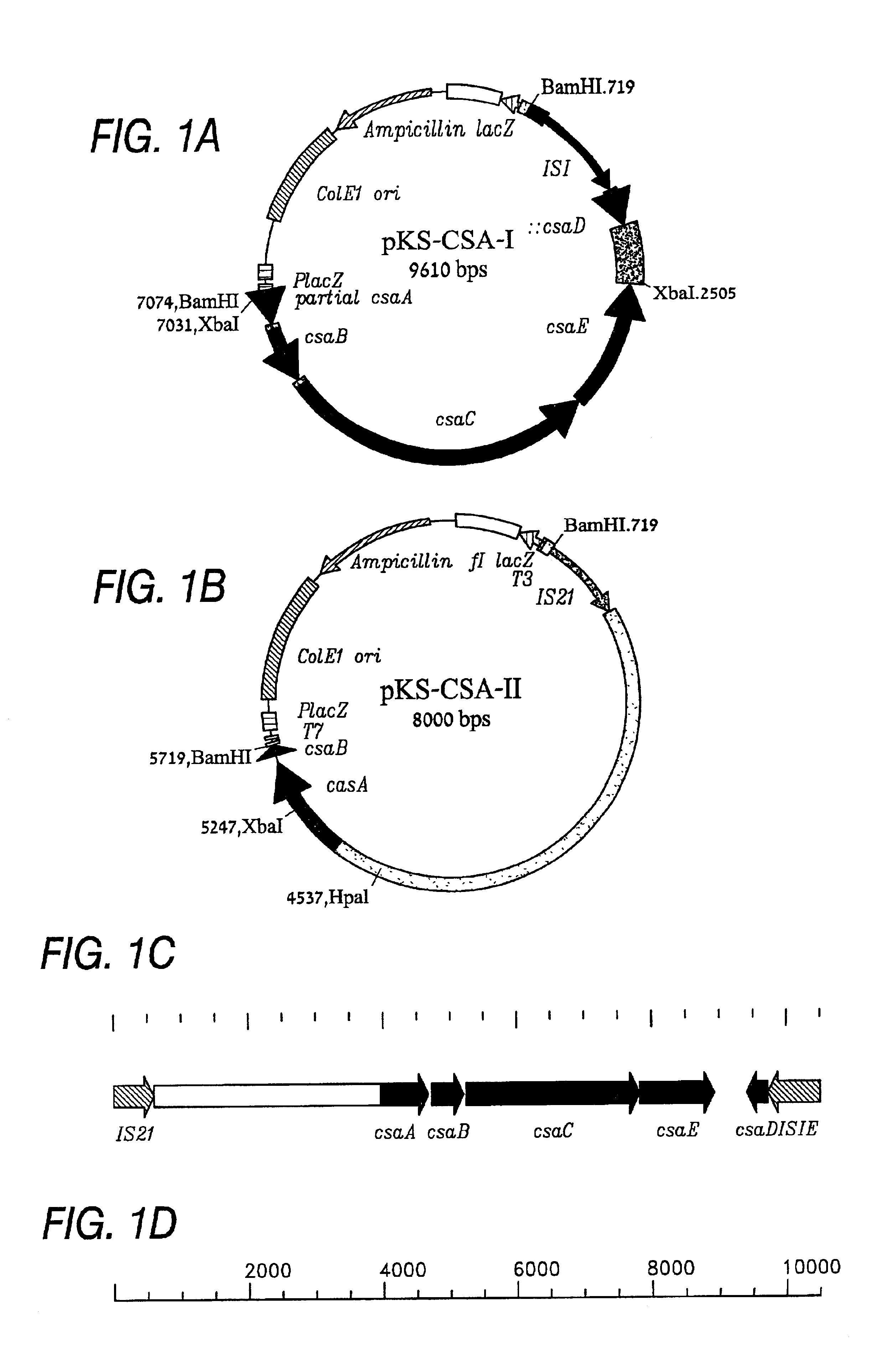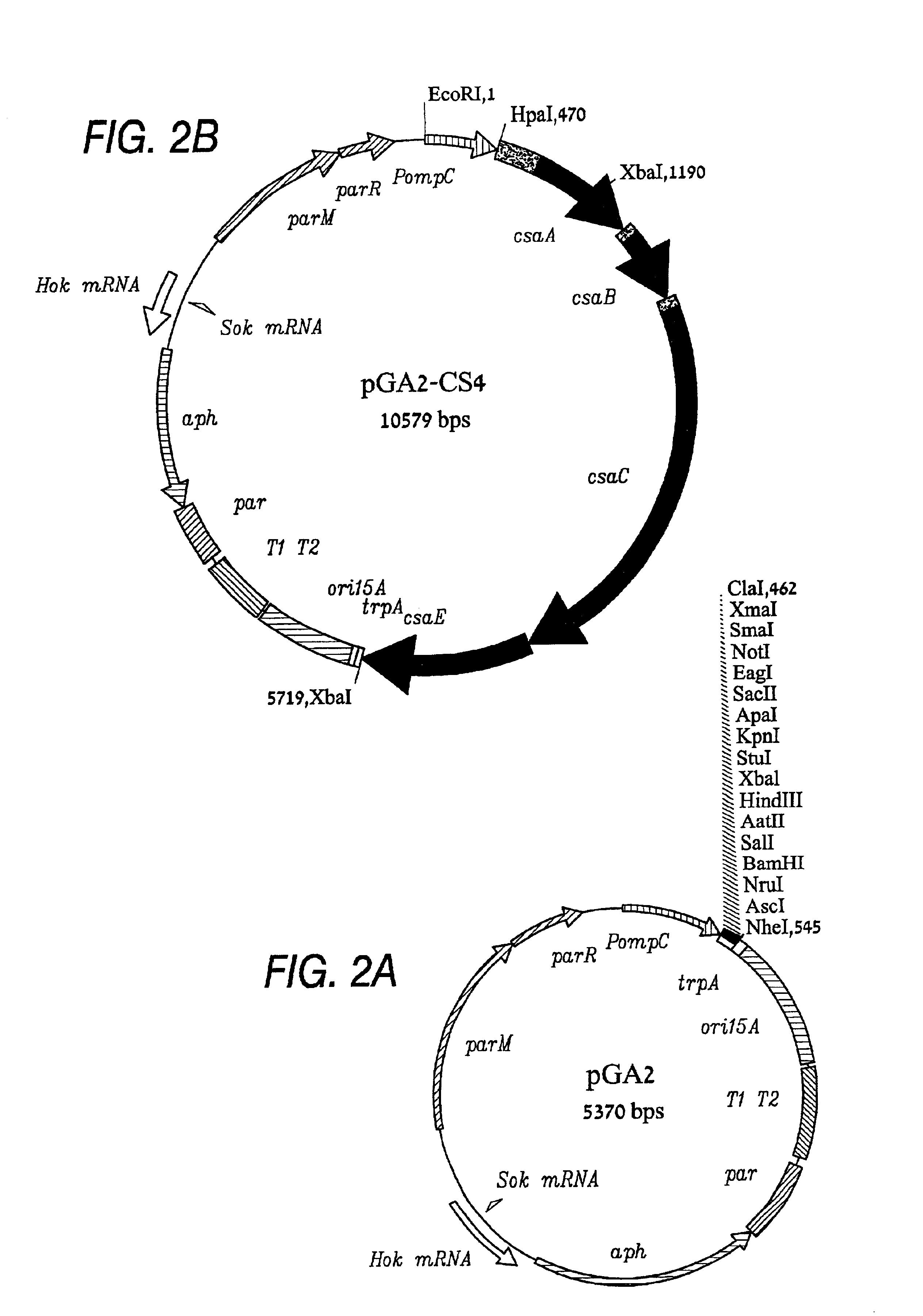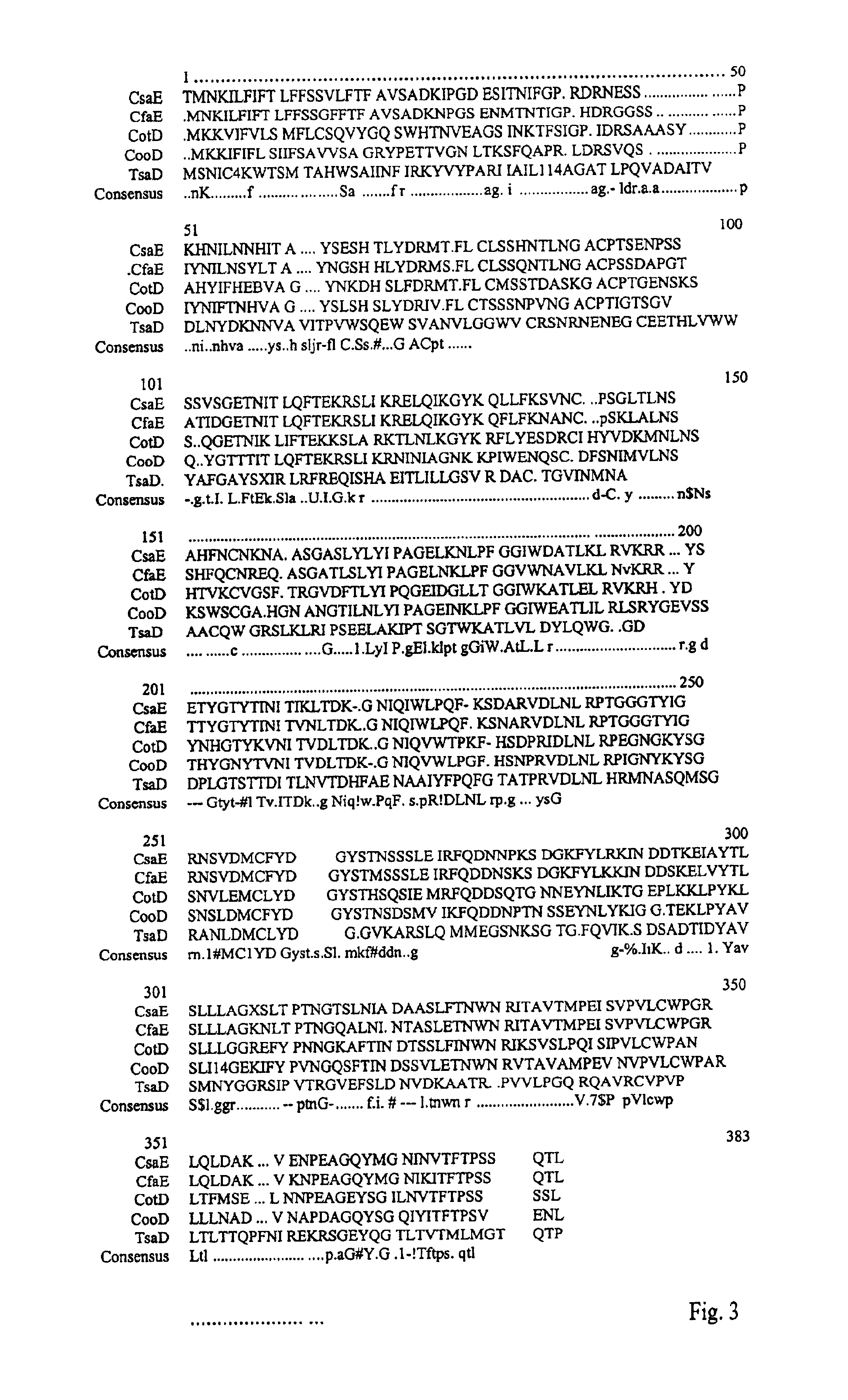Isolation and characterization of the csa operon (ETEC-CS4 pili) and methods of using same
- Summary
- Abstract
- Description
- Claims
- Application Information
AI Technical Summary
Problems solved by technology
Method used
Image
Examples
example 1
Isolation and Characterization of the csa Operon
[0151]The csa operon that encodes the synthesis of ETEC-CS4 pili was isolated from strain E11881A, cloned and sequenced. The csa operon consist of 5 contiguous genes encoding CsaA-CsaE proteins, which share homology to other pili assembly proteins, and especially to CFA / I. The csa operon was expressed in an attenuated Shigella strain, CVD1204 guaBA, constructing the Shigella expressing CS4 fimbriae vaccine strain CVD1204 (pGA2-CS4). Immunization of guinea-pigs with CVD1204 (pGA2-CS4) elicited the production of anti-CS4 antibodies that reacted with CS4 producing strains and prevented biological activities mediated by ETEC strains. This work contributes to previously reported results regarding the on expression of CFA / I, CS2, CS3 and LT in attenuated Shigella, emphasizing the feasibility of constructing an efficient multivalent Shigella-based oral ETEC vaccine.
[0152]The genes that encode the synthesis of ETEC CS4 fimbriae, csaA,B,CD,E,D′...
example 2
Construction of an Attenuated S. typhi Strain that Constitutively Expresses CS4
[0194]In order to change the expression of CS4 in pGA2-CS4 from osmotically regulated to constitutive, a strong promoter, e.g., Ptac, is used. The promoter Ptac is constitutively active in Salmonella spp., as these organisms lack laqI. Accordingly, constitutive CS4-expressor derivatives of CVD 915 are constructed in the manner described below.
[0195]First, the ompC promoter is removed from the pGA2-CS4 construct and replaced with the Ptac promoter, resulting in the creation of pGA2tac-CS4. After confirming the presence of the Ptac promoter in pGA2tac-CS4, the construct is introduced into S. typhi strain CVD-915, using standard molecular biology techniques.
[0196]Constitutive expression of the CS4 antigen is assessed by the agglutination assay described in Example 1. Using wild-type S. typhi strain Ty2 as the positive control, and untransformed CVD-915 (CVD 915−) as the negative control, expression of the CS...
example 3
Immune Response Against Constitutively Expressed CS4
[0197]Groups of ten 6 weeks old Balb / c mice are immunized intranasally with 1.0×1010 cfu of strain CVD 915 with pGA2tac-CS4 (CVD 915+) or CVD 915 without pGA2tac-CS4 (CVD 915−1). Mice are bled prior and 30 days after their immunization, and their serum is stored at −20° C. until use. Antibodies present in the serum against S. typhi LPS, H (flagella) and CS4 antigens are determined by ELISA. The results indicate that immunization with strain CVD 915+ elicits antibody levels against the CS4 antigen that are significantly higher than those obtained with strain CVD 915−. The immune responses against other S. typhi antigens (LPS and H) are similar between both immunized groups. The results demonstrate that the constitutive expression of the CS4 antigen enhances the immune response against this antigen without interfering with the immune response against other somatic S. typhi antigens.
PUM
| Property | Measurement | Unit |
|---|---|---|
| Temperature | aaaaa | aaaaa |
| Temperature | aaaaa | aaaaa |
| Molar density | aaaaa | aaaaa |
Abstract
Description
Claims
Application Information
 Login to View More
Login to View More - R&D
- Intellectual Property
- Life Sciences
- Materials
- Tech Scout
- Unparalleled Data Quality
- Higher Quality Content
- 60% Fewer Hallucinations
Browse by: Latest US Patents, China's latest patents, Technical Efficacy Thesaurus, Application Domain, Technology Topic, Popular Technical Reports.
© 2025 PatSnap. All rights reserved.Legal|Privacy policy|Modern Slavery Act Transparency Statement|Sitemap|About US| Contact US: help@patsnap.com



